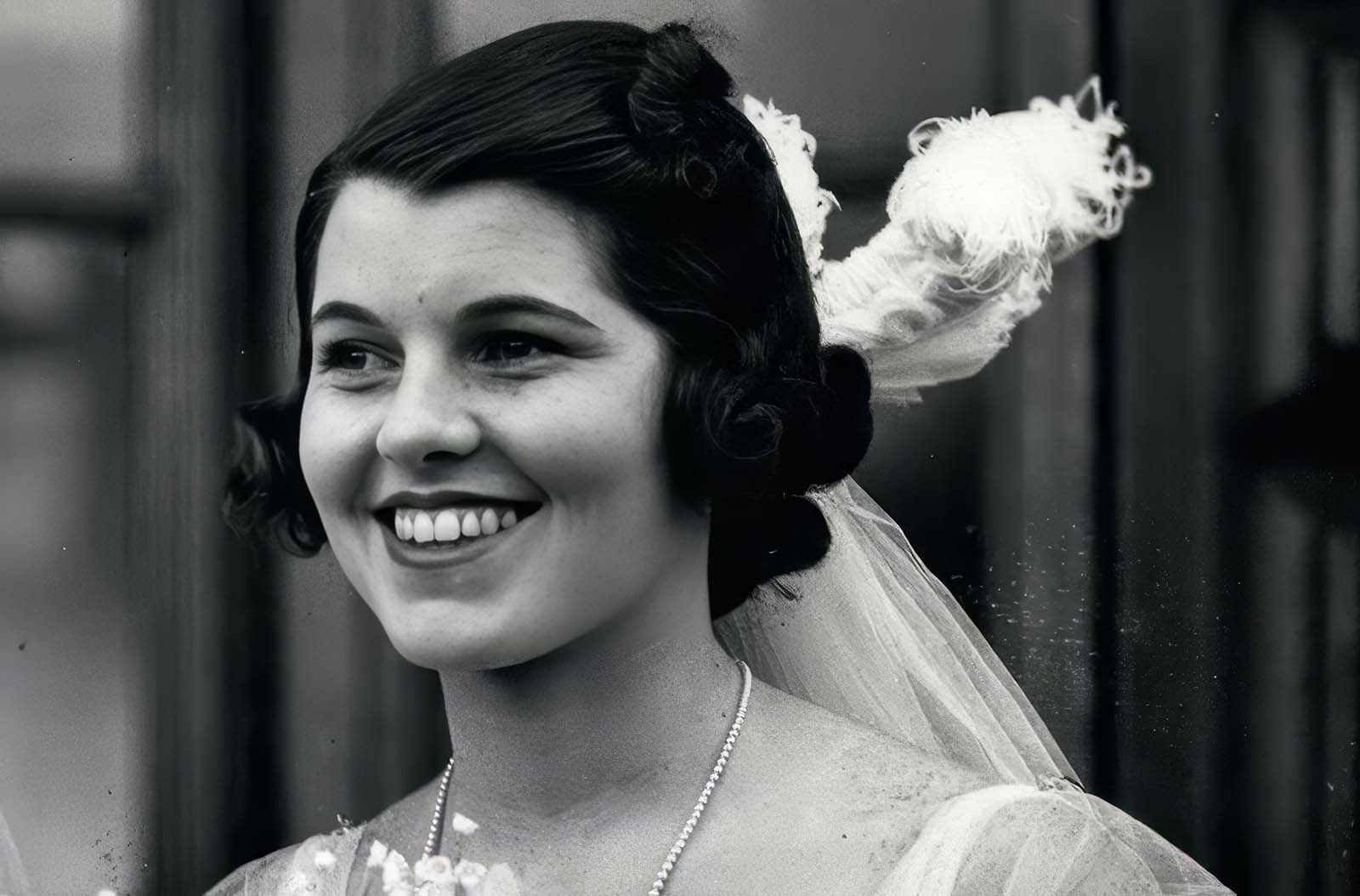 The Kennedy name is often associated with political power, charm, and tragedy. But hidden within the family’s storied past is one of its most haunting chapters—the life of Rosemary Kennedy.
The Kennedy name is often associated with political power, charm, and tragedy. But hidden within the family’s storied past is one of its most haunting chapters—the life of Rosemary Kennedy.
Photographs of her from before and after a devastating medical procedure reveal a woman whose future was stolen at just 23 years old, when her father arranged a lobotomy that left her incapacitated for the rest of her life.
Rosemary’s story is a profound tale of personal suffering, serving as a reflection of both her family’s ambitions and the societal pressures of the time.
 Early Life
Early Life
Rose Marie “Rosemary” Kennedy was born in 1918, the third child and first daughter of Joseph P. Kennedy Sr. and Rose Fitzgerald Kennedy.
She grew up alongside siblings who would go on to shape American politics, including President John F. Kennedy and Senators Robert and Ted Kennedy. Unlike them, however, Rosemary struggled from the very beginning.
Her birth was marked by complications. During an influenza outbreak, the attending doctor was delayed, and a nurse instructed Rose Kennedy to keep her legs closed, leaving the baby trapped in the birth canal for two hours.
This lack of oxygen caused lasting damage. As Rosemary grew, her parents noticed she lagged behind in milestones—slow to crawl, walk, and later, to read or write.
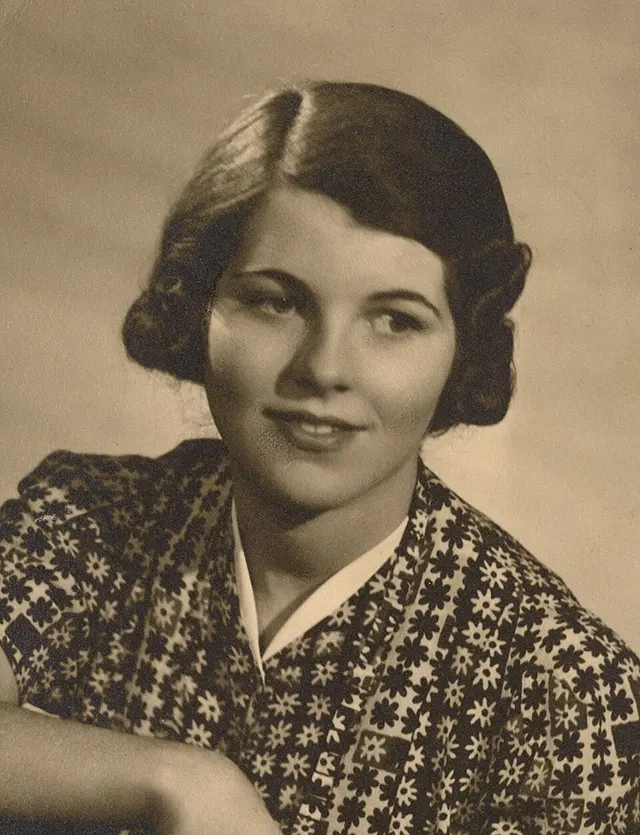
Kennedy in 1938, aged 20.
Accounts described her as having an intellectual disability, though historians have noted inconsistencies in how the Kennedys portrayed her condition.
Rose Kennedy often concealed her daughter’s struggles from friends, maintaining the appearance of normal development.
By age 11, Rosemary was sent to a Pennsylvania boarding school for children with disabilities, and at 16, she attended the Sacred Heart Convent in Rhode Island.
There, she was taught separately by two nuns and a private instructor, her skills in reading, writing, and arithmetic never advancing beyond a fourth-grade level.

JFK and his family in 1934. Rosemary is fourth from the right.
Despite these difficulties, Rosemary’s diaries from the late 1930s reveal the life of a young woman who loved social outings, the opera, and tea dances.
In 1938, while her father served as U.S. ambassador to the United Kingdom, she was even presented as a debutante before King George VI and Queen Elizabeth at Buckingham Palace.
To the outside world, she seemed a shy but graceful young woman, though her challenges continued to shadow her daily life.

Rosemary in her early years.
The Lobotomy
According to her sister Eunice, Rosemary Kennedy’s behavior became more troubling after returning from the United Kingdom in 1940, when she was 22.
She suffered convulsions and sudden violent outbursts, sometimes lashing out and injuring those around her.
She was expelled from a summer camp in Massachusetts, spent only a short time at a Philadelphia boarding school, and was eventually placed in a convent school in Washington, D.C.

The Kennedy family at Hyannis Port, Massachusetts in 1931, with Rosemary on the far right.
There, Rosemary began sneaking out at night, alarming the nuns who feared she might become sexually active, risk contracting disease, or face pregnancy. Her increasingly unpredictable actions left her parents deeply concerned.
Joseph Kennedy, in particular, worried that his daughter’s behavior could bring scandal and jeopardize the political ambitions of his children.
In 1941, Joseph arranged for doctors Walter Freeman and James Watts to perform a lobotomy, and this was done without notifying the family.
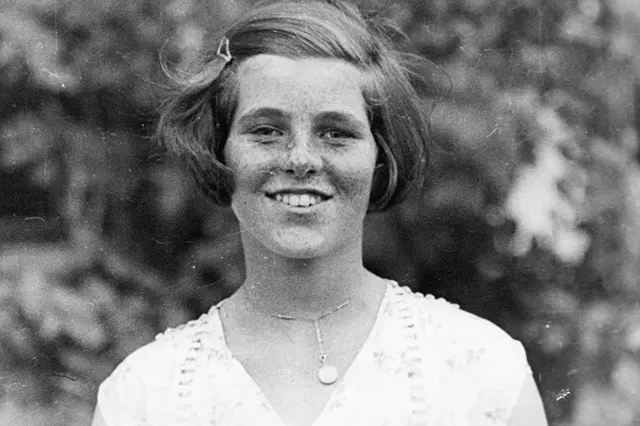 Dr. Watts later recalled the procedure: “We went through the top of the head. I think she was awake. She had a mild tranquilizer. I made a surgical incision in the brain through the skull. It was near the front. It was on both sides. We just made a small incision, no more than an inch.”
Dr. Watts later recalled the procedure: “We went through the top of the head. I think she was awake. She had a mild tranquilizer. I made a surgical incision in the brain through the skull. It was near the front. It was on both sides. We just made a small incision, no more than an inch.”
The instrument, resembling a butter knife, was moved up and down to sever brain tissue. As Watts operated, Dr. Freeman asked Rosemary to recite the Lord’s Prayer, sing God Bless America, or count backward.
“We made an estimate on how far to cut based on how she responded,” Watts explained. When Rosemary’s words dissolved into incoherence, the operation was stopped.
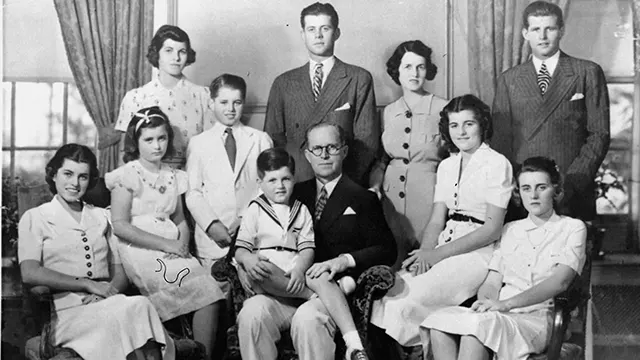
The Kennedy Family.
Dr. James Watts later told journalist Laurence Leamer Kessler that, in his view, Rosemary Kennedy did not suffer from “mental retardation” but rather from a form of depression. A review of the doctors’ published papers supported his assessment.
Bertram S. Brown, director of the National Institute of Mental Health and a former aide to President John F. Kennedy, also told Kessler that Joseph Kennedy had described his daughter as mentally retarded rather than mentally ill in order to protect John’s image during his presidential run.
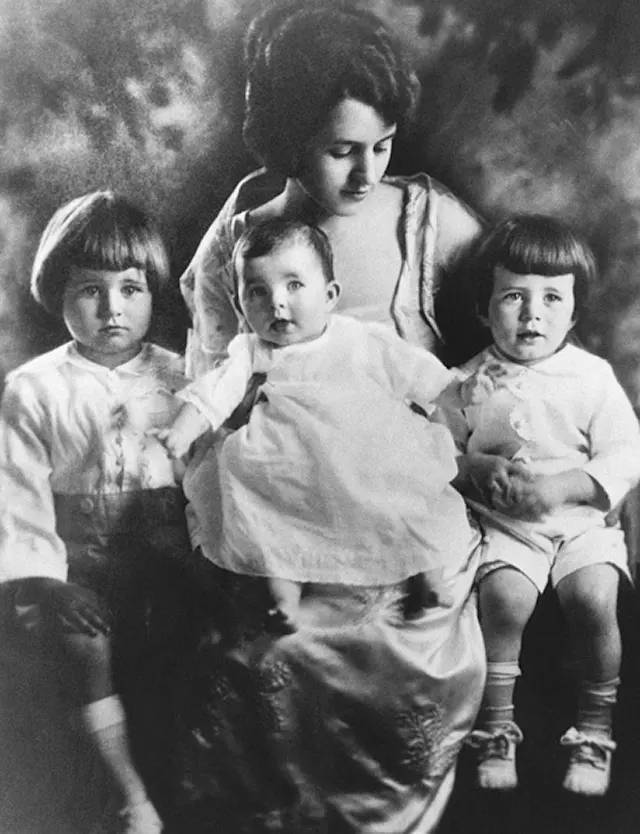
Rosemary as a baby, flanked by her older brothers Joe Jr. and John.
Brown added that the family’s “lack of support for mental illness is part of a lifelong family denial of what was really so.”
The devastating consequences of the operation soon became clear. Rosemary’s mental capacity regressed to that of a small child.
She lost the ability to walk without assistance, could no longer speak coherently, and was left incontinent.
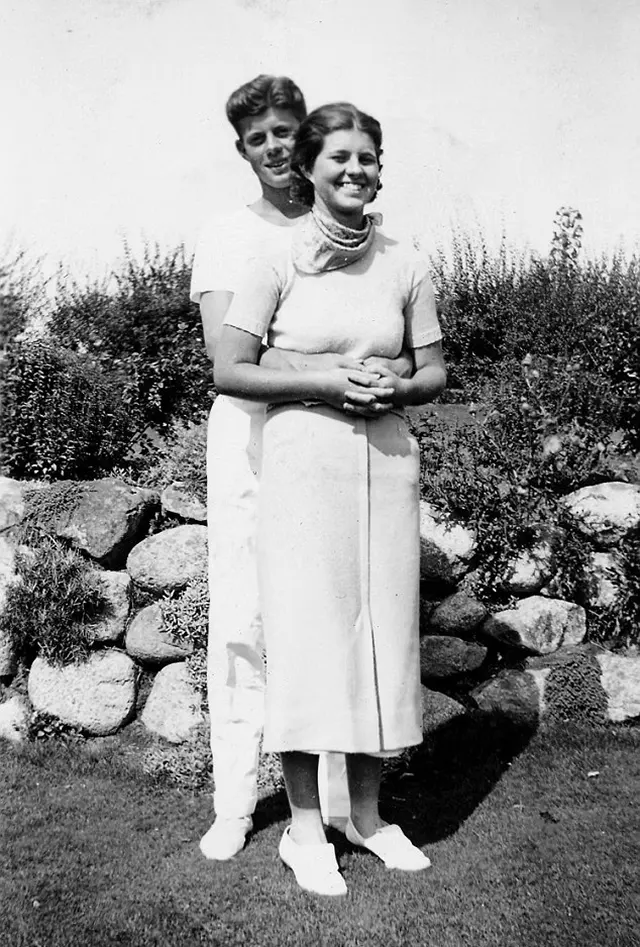
Rosemary with her brother and future president, John.
Aftermath and Later Years
The outcome of the lobotomy was devastating. Rosemary was institutionalized almost immediately, first at Craig House, a private psychiatric hospital in New York, and later at St. Coletta School for Exceptional Children in Wisconsin, where she would live for the rest of her life.
Her parents distanced themselves from her. Joseph Kennedy never visited, and Rose Kennedy did not see her daughter for two decades.
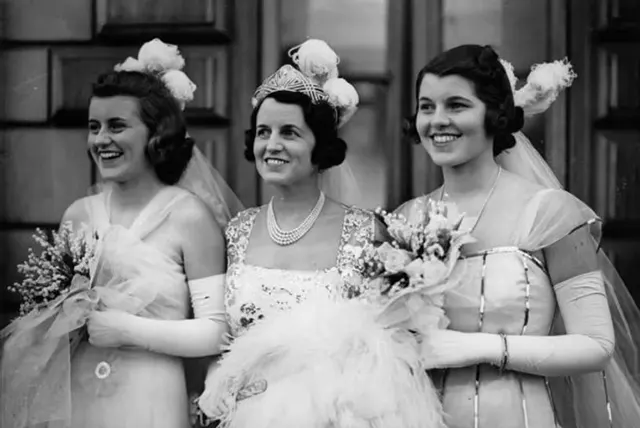
1th May 1938: Rosemary (R) with her mother (C) and sister Kathleen (L) on the day of her presentation to the King and Queen.
For years, the truth about Rosemary’s condition was concealed not only from the public but from her own siblings.
When John Kennedy rose in politics, the family explained her absence by saying she preferred privacy. It wasn’t until after he became president in 1961 that the reality of her situation began to surface.
 The full story remained hidden until 1962, when Eunice Kennedy revealed her sister’s disability in The Saturday Evening Post.
The full story remained hidden until 1962, when Eunice Kennedy revealed her sister’s disability in The Saturday Evening Post.
Even then, the fact of the lobotomy itself did not come to light until 1987, when historian Doris Kearns Goodwin exposed it in her book The Fitzgeralds and the Kennedys.
Over time, the family reconnected with Rosemary. After her father’s death in 1969, her siblings began including her in family gatherings again.
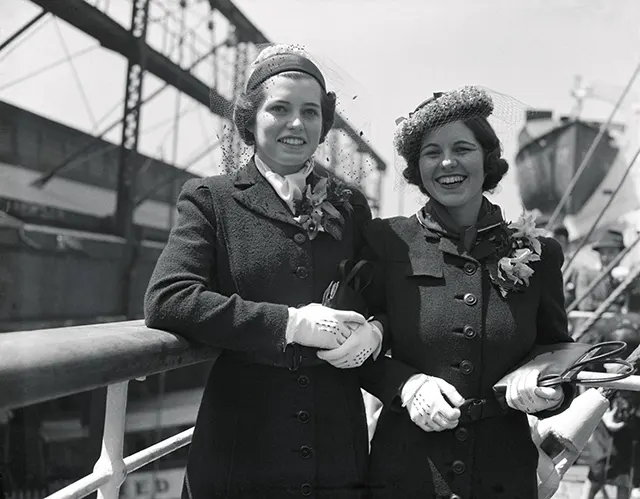
Eunice (L) and Rosemary (R), just three years before her lobotomy.
By then, she had relearned to walk with a limp but never recovered clear speech. She spent her later years in care, occasionally visiting relatives in Florida, Washington, D.C., and Cape Cod.
On January 7, 2005, Rosemary Kennedy died of natural causes at age 86 in Fort Atkinson, Wisconsin, surrounded by her siblings Jean, Eunice, Patricia, and Ted.
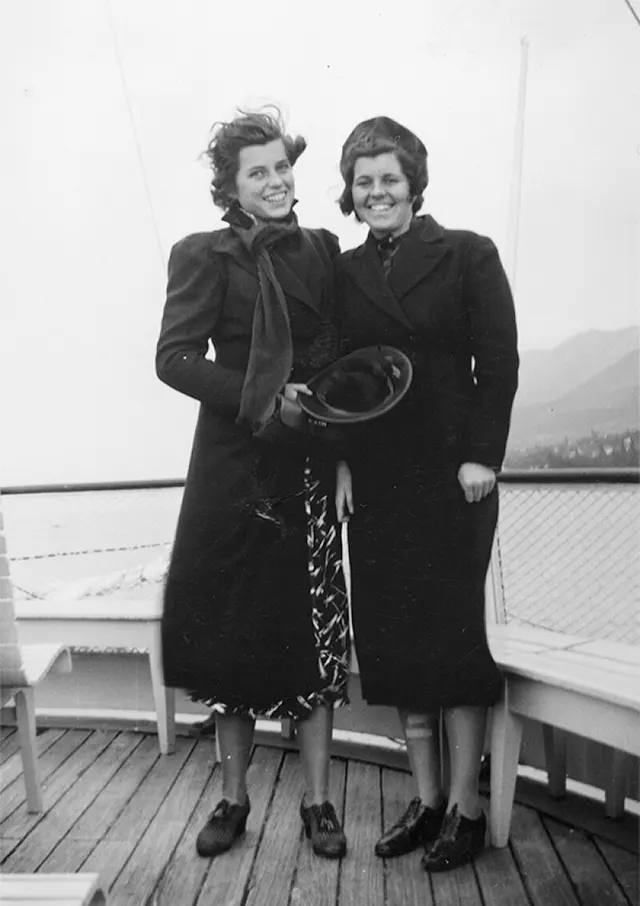
Eunice and Rosemary, right, were close companions all through childhood—and even traveled together on their first tour of Europe.
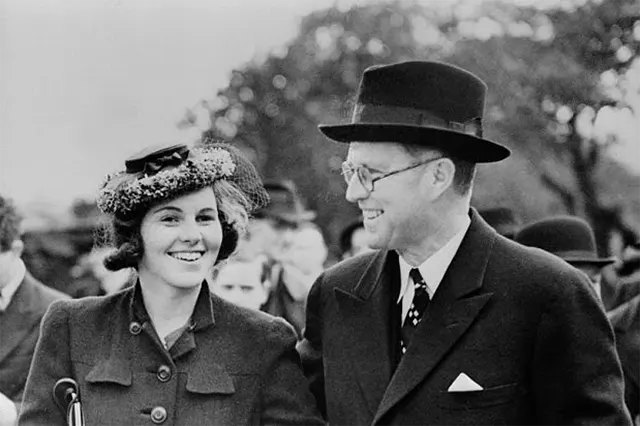
Joseph P Kennedy, photographed with his daughter Rosemary, during his time as US Ambassador to Great Britain.
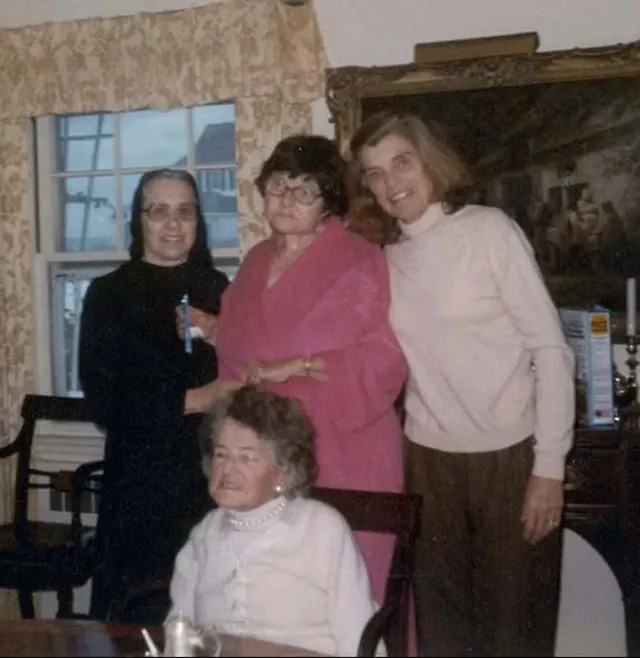

Rosemary with Teddy Kennedy.
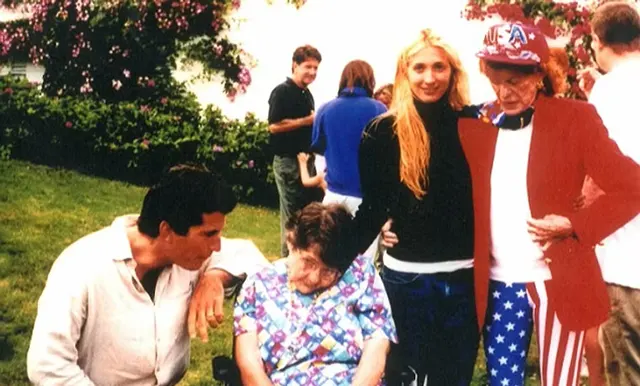
John Kennedy Jr. and his wife Carolyn Bessette Kennedy visit with Rosemary.



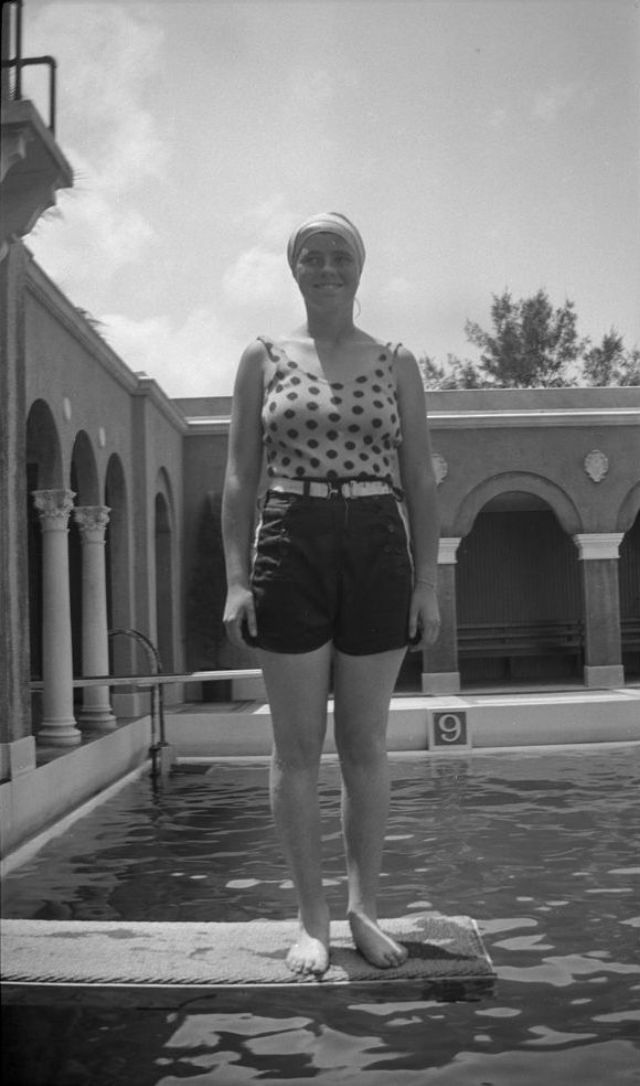



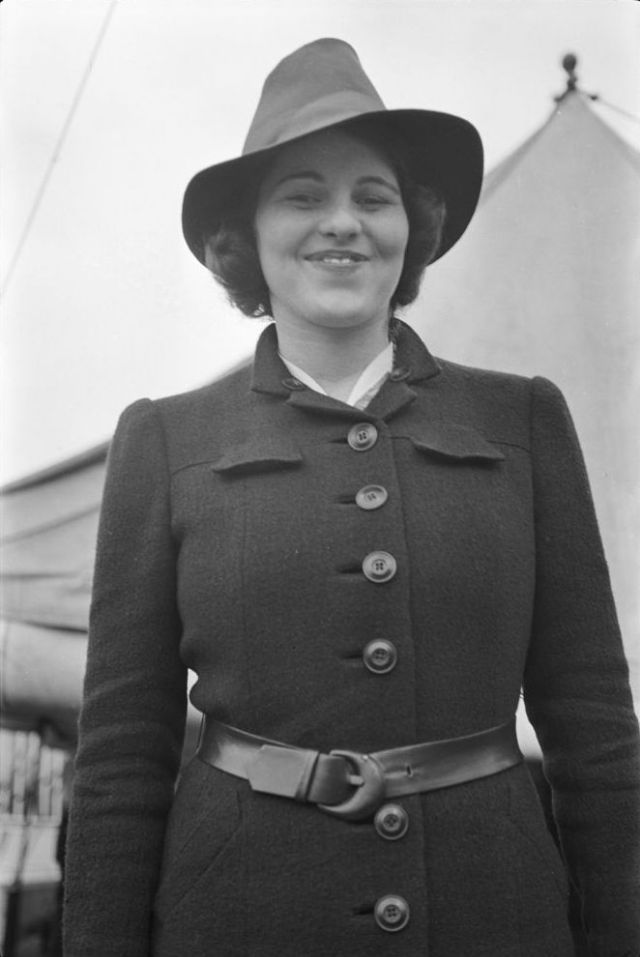


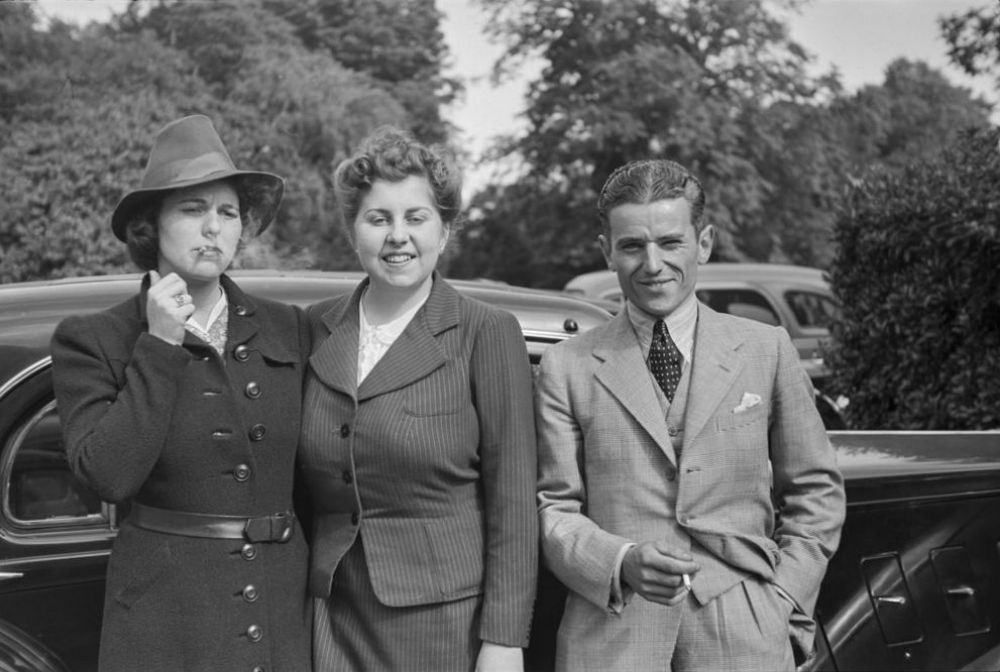

(Photo credit: Wikimedia Commons / Britannica / Library of Congress / Daily Mail UK / Pinterest).